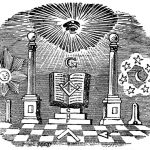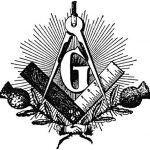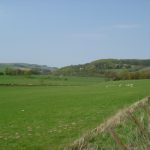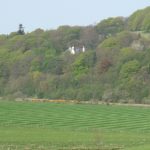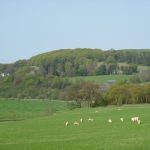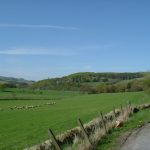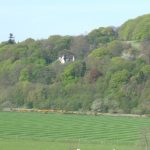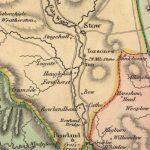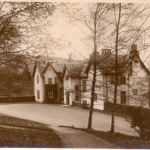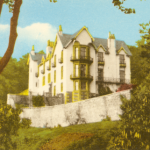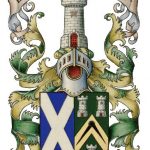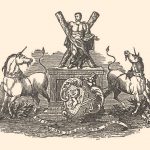St Johns Lodge, Haughfoot
St. John’s Lodge of Haughfoot has the distinction of being the first ‘Speculative’ Lodge of gentlemen Freemasons, as opposed to an ‘Operative’ Lodge of stonemasons, in Scotland and the World! The first recorded minute of the Lodge dates from 22nd December 1702.
The founding members were:
- John Hoppringle of that ilk (Laird of Torsonce the ‘Master Mason’ or ‘Preses’)
- Andrew Thomson (a local lawyer and Lodge ‘Boxmaster’)
- James Pringle (Brother of the Laird of Torsonce)
The first to be entered (‘Admitted to the Society of apprentice and fellowcraft’) were:
- Sir James Scott of Gala M.P. (Laird of Galashiels) [Torsonce was married to Gala’s sister].
- Thomas Scott (his brother)
- David Murray (in Philiphaugh)
- James Pringle (in Haughfoot)
- Robert Lourie (in Stowtounhead)
- John Pringle (a wright)
William Pringle in Burnhouse was admitted on 27 December 1706, and James Pringle of Torwoodlee was admitted in 1709.
John Hoppringle of Torsonce (Haughfoot was located on his estate) died in Edinburgh on 21st December 1737, and the last time the lodge met at Haughfoot was on the 27th December 1738. They next met at Galashiels on the 6th January the next year, and after that they agreed to meet on St Johns day at Stow and then thereafter to meet alternately at Galashiels and Stow. However due to bad weather and the distance needed to travel, the lodge split into two, and became:
The minutes (of the Haughfoot lodge) record: ‘Galashiels Jany 20 1742, The Masons of Galashiels seperat from the brethren at Stow being met day forsd and rols made and marked as follows.’
The Lodge of Galashiels met many times in Selkirk between 1753 and 1763, which was year of the last entry in the Minute Book of the Lodge of Haughfoot. The book became a possession of the Lodge of St John, Selkirk, No. 32.
In 1898-99, James L Pringle was Master of Galashiels Lodge No 262.
For more information visit: The Pringle’s Lodge – Lodge of Haughfoot, No. 1824 – Haughfoot.co.uk
Other Lodges with Pringle connections:
The Lodge of Edinburgh, St. Mary’s Chapel, No. 1:
Walter Pringle of Graycrook [Craigcrook Castle, Edinburgh] (an Advocate, and uncle of Sir John Pringle of Stitchill, 2nd Bart.) was initiated on the 24 June 1670, into of the Lodge of Edinburgh, St. Marys Chapel, No.1.The Lodge of Melrose, St. John, No. 1 bis:
From the minutes of the Lodge of Melrose, No. 1 bis, dated 1675, we see that James and Robert Pringle were members. Andrew Pringle was Master of Melrose Lodge in 1755.The Lodge of Kelso No. 58 (founded before 1701):
According to the minute dated 2 June 1702, Sir John Pringle of Stitchel, 2nd Bart., was elected as the second recorded Master of the Lodge of Kelso. Robert Pringle of Clifton was also Master of this lodge in 1707.The Lodge at the Ship Inn, behind the Royal Exchange, No 18, London (the 1st Irish Lodge in London, constituted in 1723 and erased in 1745):
The book ‘The Foundations of Modern Freemasonry’, by Ric Berman PhD, in Appendix 8 on page 238, lists 18th century members of the Royal College of Physicians who were also Freemasons, and lists a certain ‘John Pringle’ who was a member of the above named lodge, citing ‘Grand Lodge Minutes’. In his other book ‘Schism’, Berman suggests that this ‘John Pringle’ who was listed as a member in 1723, was either John Pringle, Lord Haining (c.1674-1754), who was MP for Selkirkshire between 1708-1729 or more probably John Pringle of Caledon, Co, Tyrone (1690-1741). This would not have been Dr Sir John Pringle of Pal Mall, 1st Bart (1707-1782) who was also President of the Royal Society, as he was too young to be a member of the Lodge in 1723.St. John’s Lodge, Philadelphia:
On the list of members of the Lodge between 1731-1738, we find William Pringle. Also Benjamin Franklin.
- The Freemason’s Chronicle, March 22, 1884: Page 2 | Masonic Periodicals
- The Freemason’s Chronicle, March 29, 1884: Page 2 | Masonic Periodicals
- The Freemason’s Chronicle, April 5, 1884: Page 3 | Masonic Periodicals
- The Freemason’s Chronicle, April 12, 1884: Page 4 | Masonic Periodicals
- The Freemason’s Chronicle, Sept. 27, 1884: Page 6 | Masonic Periodicals
- The Freemason’s Chronicle, Oct. 11, 1884: Page 3 | Masonic Periodicals
- The Freemason’s Chronicle, March 12, 1887: Page 3 | Masonic Periodicals
The Grand Lodge of Pennsylvania:
In Philadelphia on St. Johns Day, 24th June 1732, a Grand Lodge of the Ancient and Honorable Society of Free and Accepted Masons, was held at the Tun Tavern, in Water Street. Mr William Pringle was appointed Deputy Grand Master, for the year ensuing. This is the earliest known reference to a meeting of a Grand Lodge in America.
- The Freemason’s Chronicle, July 8, 1882: Page 9 | Masonic Periodicals
- Grand Lodge of Pennsylvania – Wikipedia
Canongate Kilwinning Lodge, No. 2:
On the 13th December 1843, James Pringle Esq. of Stichell (eldest son of the 5th Baronet; predeceased his father in 1865) was initiated into Canongate Kliwinning lodge. William Pringle served as Poet-Laureate of the lodge from 1854 until 1859 (a role that Robert Burns had from 1787 until 1796). [William Pringle – this is probably the Rev. William Pringle of Auchterarder]Moria Lodge, No. 92, London, E.C.:
Colonel Sir Norman Pringle of Newhall, 7th Baronet of Stitchill, was a Past Master of this lodge, according to ‘Ars Quatuor Coronatorum’ volume 6 and 10. Sir Norman was initiated (October 18th, 1880), passed and raised in the Moira Lodge, No. 92. After which, being stationed with his regiment at Malta, he was admitted to the Royal Arch, the Mark, and the Rose Croix degrees, in 1881. He joined the Quatuor Coronati Lodge of Research in May 1887, and was No. 78 on their numerical register. He was the W.M. of his mother Lodge in 1890, and at the time of his lamented disease, I.P.Z., and Scribe E. of the Moira Chapter.- The Freemason’s Chronicle, July 15, 1882: Page 3 | Masonic Periodicals – Provincial Grand Steward of the Mark in Malta.
- The Freemason, July 22, 1882: Page 7 | Masonic Periodicals – Provincial Grand Steward of the Mark in Malta.
- The Freemason’s Chronicle, Jan. 6, 1883: Page 4 | Masonic Periodicals – His Masonic activity in Egypt.
- The Freemason, Jan. 6, 1883: Page 10 | Masonic Periodicals – Consecration of a new Mark Lodge in Egypt.
- The Freemason’s Chronicle, April 28, 1883: Page 7 | Masonic Periodicals – his Mark Lodge activity in England.
- The Freemason, April 28, 1883: Page 7 | Masonic Periodicals – his Mark Lodge activity in England.
- The Freemason, June 2, 1883: Page 10 | Masonic Periodicals – his Mark Lodge activity in Tunis.
- The Freemason’s Chronicle, June 2, 1883: Page 11 | Masonic Periodicals – Grand Senior Warden in the Provincial Grand Mark Lodge in Malta.
- The Freemason, April 23, 1887: Page 14 | Masonic Periodicals – In the Rose Croix Chapter in Gibraltar.
- The Freemason, June 11, 1887: Page 10 | Masonic Periodicals – At the Quatuor Coronati Lodge in Freemasons Hall, London.
- The Freemason, Dec. 24, 1887: Page 3 | Masonic Periodicals – In the Rose Croix Chapter in Gibraltar.
- The Freemason, Nov. 24, 1888: Page 20 | Masonic Periodicals – On a committee to thank Robert Freke Gould for his services.
- The Freemason’s Chronicle, Jan. 26, 1889: Page 8 | Masonic Periodicals – On a committee to thank Robert Freke Gould for his services.
- The Freemason, Dec. 7, 1889: Page 16 | Masonic Periodicals – Installed as Worshipful Master of Moria Lodge, No 92, London.
- The Freemason’s Chronicle, Dec. 21, 1889: Page 5 | Masonic Periodicals – Speech on being Installed as Worshipful Master of Moria Lodge, No 92, London.
- The Freemason, Dec. 28, 1889: Page 12 | Masonic Periodicals – Speech on being Installed as Worshipful Master of Moria Lodge, No 92, London.
- The Freemason, Dec. 28, 1889: Page 13 | Masonic Periodicals – Next page.
- The Masonic Review, Jan. 1, 1890: Page 4 | Masonic Periodicals – Installed as Worshipful Master of Moria Lodge, No 92, London.
- The Masonic Review, March 1, 1890: Page 16 | Masonic Periodicals – Speech on being Installed as Worshipful Master of Moria Lodge, No 92, London.
- The Freemason, March 8, 1890: Page 15 | Masonic Periodicals – As Worshipful Master.
- The Freemason, Dec. 13, 1890: Page 7 | Masonic Periodicals – As I.P.M.
- The Freemason, Jan. 31, 1891: Page 10 | Masonic Periodicals – Past Master of Moira Lodge 92.
- The Freemason, Feb. 7, 1891: Page 3 | Masonic Periodicals – Past Master of Moira Lodge 92.
- The Freemason, March 14, 1891: Page 9 | Masonic Periodicals – At the Quatuor Coronati Lodge in Freemasons Hall, London.
- The Freemason, April 4, 1891: Page 6 | Masonic Periodicals – Past Master of Moira Lodge 92.
- The Freemason, April 4, 1891: Page 7 | Masonic Periodicals – Past Master of Moira Lodge 92.
- The Freemason, July 4, 1891: Page 8 | Masonic Periodicals – At the Quatuor Coronati Lodge in Freemasons Hall, London.
- The Freemason, Aug. 8, 1891: Page 5 | Masonic Periodicals – At the Quatuor Coronati Lodge in Freemasons Hall, London.
- The Freemason’s Chronicle, Dec. 19, 1891: Page 6 | Masonic Periodicals – Past Master of Moira Lodge 92.
- The Freemason, Dec. 19, 1891: Page 7 | Masonic Periodicals – Past Master of Moira Lodge 92.
- The Freemason, June 24, 1893: Page 3 | Masonic Periodicals – A founder of the Earl of Mornington Royal Arch Chapter, No. 2000.
- The Freemason, July 1, 1893: Page 11 | Masonic Periodicals – Summer outing of the Quatuor Coronati Lodge.
- The Freemason, July 13, 1895: Page 15 | Masonic Periodicals – At the Quatuor Coronati Lodge in Freemasons Hall, London.
- The Freemason, Dec. 28, 1895: Page 5 | Masonic Periodicals – At the 140th anniversary festival of Moira Lodge 92.
- The Freemason, Feb. 15, 1896: Page 11 | Masonic Periodicals – His presentation of six candlesticks to Moira Royal Arch Chapter, No. 92.
- The Freemason, June 13, 1896: Page 11 | Masonic Periodicals – Installation as 1st Principal of Moira Royal Arch Chapter No 92.
- The Freemason, Nov. 21, 1896: Page 3 | Masonic Periodicals – At the Quatuor Coronati Lodge.
- The Freemason, Dec. 19, 1896: Page 4 | Masonic Periodicals – At Moira Lodge, No 92, London.
- The Freemason, Feb. 13, 1897: Page 10 | Masonic Periodicals – As 1st Principal of Moira Royal Arch Chapter No 92.
- The Freemason, April 17, 1897: Page 9 | Masonic Periodicals – As 1st Principal of Moira Royal Arch Chapter No 92.
- The Freemason, April 17, 1897: Page 10 | Masonic Periodicals – At the 40th anniversary dinner of the Savage Club.
- The Freemason, Sept. 18, 1897: Page 5 | Masonic Periodicals – Obituary notice.
- The Freemason, Nov. 6, 1897: Page 8 | Masonic Periodicals – Obituary in Moira Lodge.
- The Freemason, Nov. 13, 1897: Page 12 | Masonic Periodicals – Obituary in Moira Chapter.
- The Freemason, Feb. 12, 1898: Page 11 | Masonic Periodicals – Robert F. Gould elected Scribe E. in his place.
Brandon Lodge, No. 19, in Brandon, Manitoba, Canada:
Sir Norman Robert Pringle, 8th Baronet of Stitchill, was a member of this lodge, according to ‘Ars Quatuor Coronatorum’ volume 10.- The Freemason, Dec. 18, 1897: Page 4 | Masonic Periodicals – Joining member of his fathers lodge, Moira Lodge No 92.
- The Freemason, Jan. 15, 1898: Page 9 | Masonic Periodicals – At the Quatuor Coronati Lodge.
- The Freemason, March 5, 1898: Page 9 | Masonic Periodicals – Appointed Inner Guard in Moira Lodge No 92.
- The Freemason, Dec. 17, 1898: Page 4 | Masonic Periodicals – Inner Guard in Moira Lodge No 92.
- The Freemason, Dec. 16, 1899: Page 10 | Masonic Periodicals – Junior Warden in Moira Lodge No 92.
- The Freemason, Dec. 16, 1899: Page 11 | Masonic Periodicals – Senior Warden in Moira Lodge No 92.
- The Freemason, Dec. 30, 1899: Page 7 | Masonic Periodicals – At the Earl of Mornington Lodge No 2000.
- The Freemason, Dec. 22, 1900: Page 9 | Masonic Periodicals – Speech on being Installed as Worshipful Master of Moria Lodge, No 92, London.
- The Freemason, Dec. 29, 1900: Page 7 | Masonic Periodicals – Notice of Installation in Moira Lodge No 92.
- The Freemason’s Chronicle, Jan. 5, 1901: Page 1 | Masonic Periodicals – Notice of Installation in Moira Lodge No 92.
- The Freemason, March 9, 1901: Page 7 | Masonic Periodicals – Worshipful Master of Moira Lodge No 92.
- The Freemason, Nov. 2, 1901: Page 10 | Masonic Periodicals – Speech on the installation of his successor in Moira Lodge.
- The Freemason, Dec. 14, 1901: Page 4 | Masonic Periodicals – I.P.M. in Moira Lodge.
Lodge Notwani, No. 1633, S.C. in Botswana:
A certain Pringle was raised in this Lodge in 1988.Pringles and other Masonic Orders:
The Minute of 27th March 1813 records the admittance (exaltation) to the Chapter [Edinburgh RAC, No. 1] of Brother Murray Pringle, Master Mason of the Lodge New Edinburgh Kilwinning, and Scribe E (Secretary) of the Chapter, and he became the first Grand Recorder and Vice Grand Chancellor of the Supreme Royal Arch Chapter of Scotland in 1817.
Murray Pringle was also the Grand Treasurer of the Royal Grand Conclave (now the Great Priory) of Knights Templars of Scotland from 1825 until 1830. William Pringle was the Chancellor of the Canongate-Kilwinning Priory, No 8.
- The Freemasons’ Quarterly Review, April 1, 1834: Page 60 | Masonic Periodicals
- The Freemasons’ Quarterly Review, Dec. 31, 1834: Page 90 | Masonic Periodicals
- The Freemasons’ Quarterly Review, Dec. 31, 1836: Page 131 | Masonic Periodicals
- The Freemasons’ Quarterly Review, June 29, 1839: Page 101 | Masonic Periodicals
- The Freemasons’ Quarterly Review, March 31, 1843: Page 2 | Masonic Periodicals
- The Freemasons’ Quarterly Review, June 30, 1843: Page 97 | Masonic Periodicals
- The Freemasons’ Quarterly Review, Dec. 31, 1843: Page 67 | Masonic Periodicals
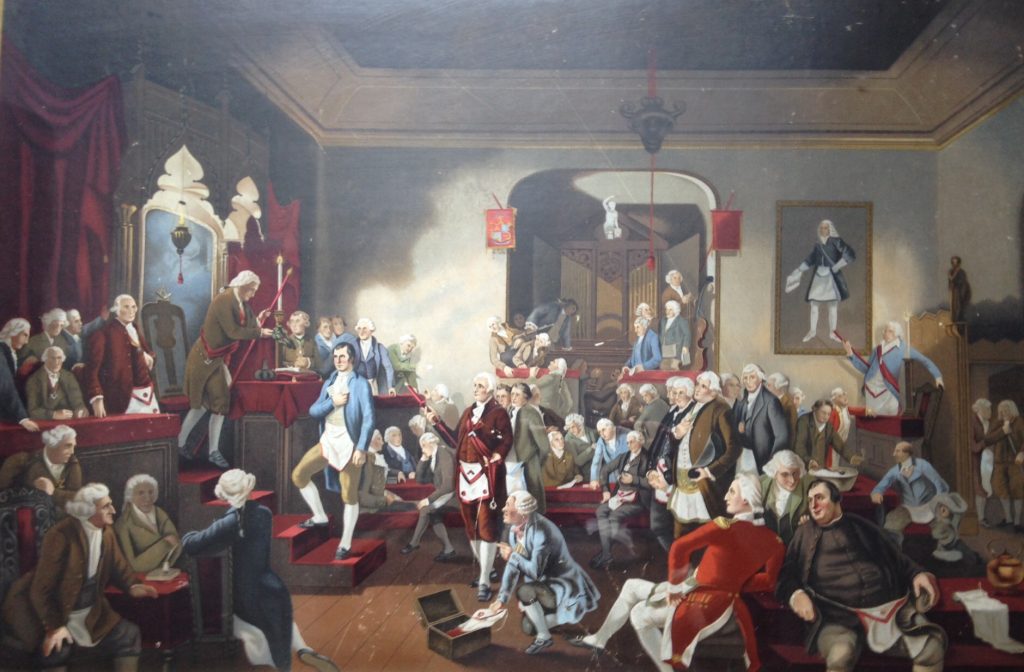
William Pringle, Poet Laureate of Canongate Kilwinning Lodge, No. 2.
From: Robert Burns Poet-Laureate of Lodge Canongate Kilwinning, by Hugh Peacock.
LINES
On Viewing Bro. STEWART WATSON’S Picture
OF
THE INAUGURATION
Contributed 30th March 1846,
By WILLIAM PRINGLE.
I.
Bard of our hearts, beheld again on earth !
Not now, indeed, as oft through fancy’s eye.
Following the plough, or by the rustic hearth,
Or ‘mid the woods warbling thy melody :
But in the shrine of Ancient Masonry,
Among “the favour’d, the enlighten’d few,”
Who, by its “hieroglyphic bright,” descry
The wisdom hidden from the world’s dim view.
II.
Oh, ever blessed be that art divine,
Which, with creative power, can back restore
The living look, each lineament and hue,
Of lov’d familiar faces now no more !
Honour’d the pencil that hath traced before
Our eyes the imaged presence of the Bard,
Whose name and fame have filled all space, and o’er
His brow renewed the wreath fond Masonry’s award.
A Christmas Chaunt for the Craft.
By Brother W. Pringle
The Freemasons’ Quarterly Review, Dec. 31, 1834: Page 50.
Let Worldlings their clubs and their coteries boast,
I leave such enjoyment to others;
For the best of delights is to circle the toast
With a band of true social Brothers.
There heart joins with heart, as hand does with hand,
In the Sacred and mystical tie,
That unites them in one indivisible band –
One brotherhood holy and high.
For spurning the cares and the passions of earth,
Each heart beats with fervour and love;
No feelings of base or contemptible birth
Draw their thoughts from that Grand Lodge above.
And if in that moment of pure flow of soul,
The wine-cup should sparkle awhile;
Could the demon of evil invade then the bowl?
In that goblet, say, could there be guile?
No! let Worldlings their clubs and their coteries boast,
I leave such enjoyment to others;
For the best of delights are the song and the toast,
With a band of true social Brothers.
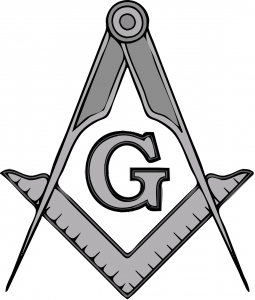
OBITUARY.
From “Ars Quatuor Coronatorum” -Transactions of the Quatuor Coronati Lodge, volume 10, page 162.
Sir Norman William Drummond Pringle, seventh baronet, who died in London on July 21st, was born at Edinburgh on April 17th, 1837, and entered the Army as Ensign in the 38th Foot now the first battalion, South Staffordshire Regiment on September 10th, 1858. He became Lieutenant-Colonel in 1882, Colonel in 1885 and retired from the Army on the pension of his rank in 1888. Sir Norman served through the Egyptian War of 1882, commanding the outposts during the reconnaissance from Alexandria, and receiving the medal and Khedive’s Star. In 1885 he was with the Soudan Frontier Field Force, being commandant of the base at Wady Haifa, and in 1886 took part in the operations on the Upper Nile. Sir Norman was initiated (October 18th, 1880), passed and raised in the Moira Lodge, No. 92. After which, being stationed with his regiment at Malta, he was admitted to the Royal Arch, the Mark, and the Rose Croix degrees, in 1881. He was the W.M. of his mother Lodge in 1890, and at the time of his lamented disease, I.P.Z., and Scribe E. of the Moira Chapter. As an exponent of the ritual, both in Lodge and Chapter, he probably had no superior. He was a ready and incisive speaker, and perhaps never so eloquent as when obliged to address his brethren or companions on the spur of the occasion. Among the ancestors of the deceased direct or collateral may be mentioned Walter Pringle, Advocate, who together with the Right Hon.William Murray and Sir John Harper, was admitted and received as a Fellow Craft in the Lodge of Edinburgh, on June 24th, 1670.
The second baronet, Sir John (nephew of Walter) Pringle, was elected Master of the Lodge of Kelso in June, and again in December, 1702. A later Walter Pringle, the next brother of Sir John, and also Robert Pringle, their nephew, were raised to the Scottish Bench by the titles of Lords Newhall and Edgefield respectively.
John, the fourth son of the second baronet, was Physician-General to the allied army in Germany. He was afterwards created a baronet, and served for many years as President of the Royal Society. At his death, without issue, his nephew, Sir James Pringle, of Stitchill, the fourth holder of the original title, also succeeded to his uncle’s baronetcy, according to the terms of the patent.
To the Haughfoot Lodge (now extinct), the Pringle family seems to have been what the Meins were to the Melrose Lodge the very head and front of the Society. At a meeting on St. John’s day (in Winter), 1707, there were four Pringles present out of a total of fifteen. One of these was John Hop-Pringle, a former Master, of Torsonce. There were two races of Pringles or Hop-Pringles. The Pringles of Torsonce were the head of one race, and on the failure of direct issue, the estate ultimately came to Sir James Pringle, of Stitchill, the fourth baronet.
Sir James Pringle served for many years in the Army. He held the office of King’s Master of Works for Scotland, and represented Berwickshire in four Parliaments. At his death in 1809, his two surviving sons, John and Norman (father of the deceased baronet) inherited Stitchil and Torsonce respectively, but these estates have now passed out of this family.
Sir Norman Pringle joined our Circle in May 1887, and was No. 78 on our numerical register. In the proceedings of the Lodge he took a deep interest, and was a frequent attendant at its meetings. His pleasing manners and genial disposition had greatly endeared him to us all, and the intelligence of his death, conveyed in this column, will cast a painful gloom over the current number of our Transactions.
Our deceased brother, who was a member of the Royal Body Guard of Scotland, a Fellow of the Royal Geographical Society, and a J.P. for Selkirkshire, is succeeded by his only son, Norman Robert Pringle, now the eighth baronet, a former member of the Brandon Lodge, in Manitoba, born in 1871.
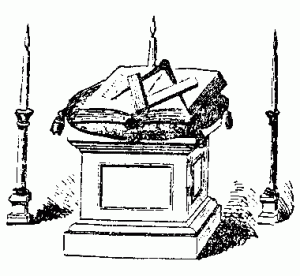
Master of Works
Colonel James Pringle of Stitchill, 4th Baronet, in 1768–1809 was the Master of Works to the Crown of Scotland, and was responsible for the construction, repair and maintenance of royal palaces, castles and other crown property in Scotland. Note that William Schaw, the first Master of Works, is largely considered to be the father of Freemasonry in Scotland.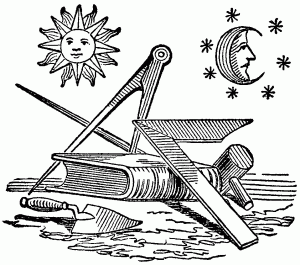
Memorandum as to connection of the Scott family with Freemasonry.
Walter Scott (Beardie) [who lived at Smailholm Tower] – Not a Mason. He had three sons-
- Walter – not a Mason.
- Robert of Sandyknowe [Sandyknowe farm is next door to Smailholm Tower] – not a Mason.
- William – not a Mason.
Robert had four sons.
- Walter, who afterwards became W.S. He was initiated in Lodge St Davids on 4th January, 1754, and affiliated in Lodge Canongate Kilwinning, on 4th February, 1767.
- A son, name unknown.
- Capt. Robert Scott, initiated in Canongate Kilwinning on 2nd March, 1796.
- Thomas, who died in 1823 at the age of 90; not a Mason.
Walter Scott, W.S., had a family of 12, of whom six died in infancy. The others are:-
- Robert, a sailor, initiated in Lodge St Davids on 7th December, 178
- John, not a Mason.
- Anne.
- Walter, afterwards Sir Walter Scott [of Abbotsford]; initiated in Lodge St Davids on 2nd March, 1801.
- Thomas, afterwards W.S., initiated in Lodge Canongate Kilwinning, on 18th November, 1807.
- Daniel, not a Mason.
Thomas had only one son.
- Walter, a Captain in the Engineers, H.E.I.C.S., Bombay. He was initiated in Lodge Canongate Kilwinning on 6th April, 1836.
Sir Walter Scott [of Abbotsford] had one son.
- Walter, 2nd Baronet, who was initiated in Lodge Canongate Kilwinning on 30th November, 1826.
- The son-in-law of Sir Walter Scott, 1st Baronet, was J. Gibson Lockhart, initiated in Lodge Canongate Kilwinning on 26th January, 1826.
J. Gibson Lockhart had one son.
- Walter Scott Lockhart Scott, who, as a Lieutenant in the 16th Lancers, was initiated in Lodge Canongate Kilwinning on 9th February, 1848.
- Canongate Kilwinning Lodge, No. 2 – Lck2.co.uk
- St David (University Lodge) No. 36 – StDavidUniversityLodge.org.uk
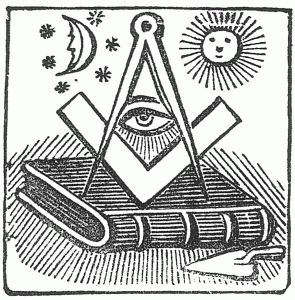
Further Reading:
- Memorials of the Haughfoot Lodge, by Brother Harry Carr.
- History of Freemasonry in the Province of Roxburgh, Peebles and Selkirkshires, from 1674 to the present. by Brother W. Fred Vernon. London 1893.
- The Haughfoot Lodge. From Ars Quatuor Coronatorum [Volume 16 (1903)], by John Yarker
- The First Freemasons: Scotland’s Early Lodges And Their Members, by Professor David Stevenson. Edinburgh 2001.
- The Origins Of Freemasonry, by Professor David Stevenson. Cambridge University Press 2005.
- Freemasonry in Scotland: The History of the Lodge of Edinburgh (Mary’s Chapel) No. 1. – Embracing an account of the rise and progress of Freemasonry in Scotland. By David Murray Lyon. Edinburgh 1873.
- The Lodge of Edinburgh (Mary’s Chapel) No. 1.: Quatercentenary of Minutes 1599-1999. By Brother Joseph Ewart McArthur.
- History of the Lodge Canongate Kilwinning, No. 2. Compiled from the records, 1677-1888. By Brother Allan MacKenzie. Edinburgh 1888.
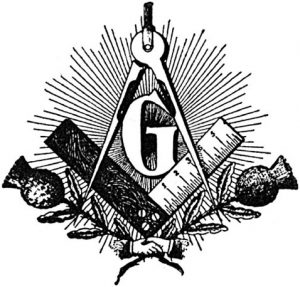
A few Scottish Lodges:
- Mother Kilwinning, No. 0, the Mother Lodge of Scotland – www.MK0.com
- Lodge of Edinburgh (St. Mary’s Chapel), No. 1 – LodgeOfEdinburgh.org.uk
- The Lodge of Melrose, St. John, No. 12 (bis) – 1bis.co.uk
- The Lodge of Aberdeen, No. 13 (ter) – AberdeenNo1ter.com
- Canongate Kilwinning Lodge, No. 2 – Lck2.co.uk
- Lodge Peebles Kilwinning, No. 24 – Peebles24.co.uk
- Lodge of St. John, Selkirk, No. 32.
- Lodge Kelso and Tweed, No 58 – Kat58.co.uk
- Lodge St Ebbe, Eyemouth, No. 70 – StEbbe70.co.uk
- Hawick Lodge, No. 111 – Lodge111.co.uk
- Lodge of St. John, Stow, No. 216.
- Lodge of St. John, Galashiels, No. 262 – Galashiels262.co.uk
- Hawick Lodge St. James B.U.R.A. (Border Union Royal Arch) No. 424 – HawickLodge424.co.uk
- The Lodge of Ercildoune, Earlston, No 1119 – Ercildoune1119.co.uk
- Lodge of St. John, Haughfoot, No. 1824 – The Pringle’s Lodge – Haughfoot.co.uk
Provincial Grand Lodges in the Lothians and Borders
- Provincial Grand Lodge of the Scottish Borders – Pgltsb.co.uk
- Provincial Grand Lodge of Midlothian – Pglm.co.uk
- Provincial Grand Lodge of Edinburgh – Pgle.org
Grand Masonic Bodies in Scotland:
- GrandLodgeScotland.com – Scottish Craft Freemasonry – The Grand Lodge of Scotland
- RoyalOrderScotland.org – The Grand Lodge of the Royal Order of Scotland
- Sgrac-Scotland.com – The Supreme Grand Royal Arch Chapter of Scotland
- GreatPrioryOfScotland.com – The Knights Templar of Scotland
- SupremeCouncilForScotland.org – The Supreme Council for Scotland A. & A. S. R.

